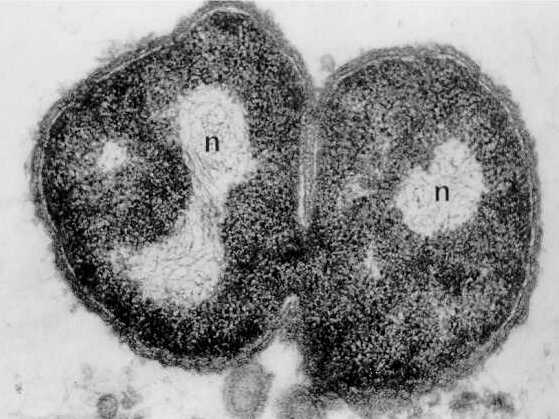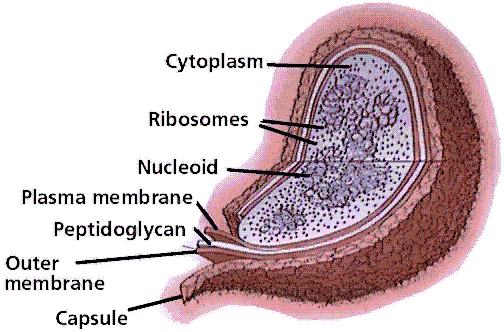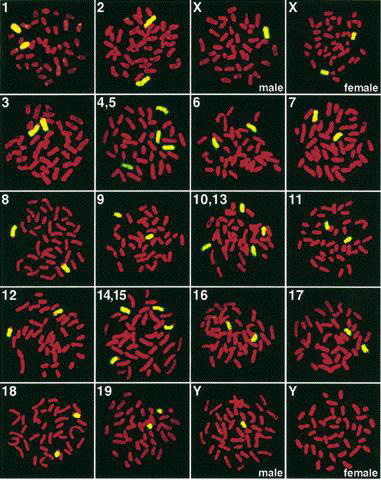Biology Dept Kenyon College |
and Cell Division |

|
Biology Dept Kenyon College |
and Cell Division |

|
Bacterial Chromosome Structure Prokaryotic cells (bacteria) contain their chromosome as circular DNA. Usually the entire genome is a single circle, but often there are extra circles called plasmids. The DNA is packaged by DNA-binding proteins.
The bacterial DNA is packaged in loops back and forth. The bundled DNA is called the nucleoid. It concentrates the DNA in part of the cell, but it is not separated by a nuclear membrane (as in eukaryotes.) The DNA does form loops back and forth to a protein core, attached to the cell wall. 

From Bacterial Diversity
Eukaryotic cells contain their DNA within the nuclear membrane.
The DNA is wrapped around the histone core of eight protein subunits, forming the nucleosome. The nucleosome is clamped by histone H1. About 200 base pairs (bp) of DNA coil around one histone. The coil "untwists" so as to generate one negative superturn per nucleosome. 
Life, the Science of Biology, by Purves, Orians, & Heller, 5th ed., 1997 Click on image to see molecular structure from Protein Data Bank (pdb 1aoi) This form of DNA is active chromatin; it can be "expressed" (transcribed and translated) to make RNA and proteins (Chapter 4). How
is the chromatin "read"? How does the cell know which genes to use
when? Part of the answer comes from the histone
code of histone modifications (as well
as DNA modifications). For example:
Eukaryotic
Chromosome condensation

Life, the Science of Biology, by Purves, Orians, & Heller, 5th ed., 1997 The ribbon forms a coil, which
then loops back and forth attached to a nuclear
matrix -- similar to the protein core
of bacteria, but greatly extended. During mitosis, several more
layers of coiling result in fully condensed
chromatin (see textbook Ch. 9). |
| In mitosis,
the chromosomes appear as the thick rod-shaped bodies which can be stained
and visualized under light microscopy.
The modern way to visualize
condensed chromosomes is by FISH -- fluorescence
in situ hybridization. In this method,
fluorescent antibody-tagged DNA probes hybridize to their complementary
sequences in the chromosomes. By using FISH probes with different
colored fluorophores, one can color each human chromosome independently,
and thus identify all 23 chromosomes. This is called
chromosome
painting.
|
 |